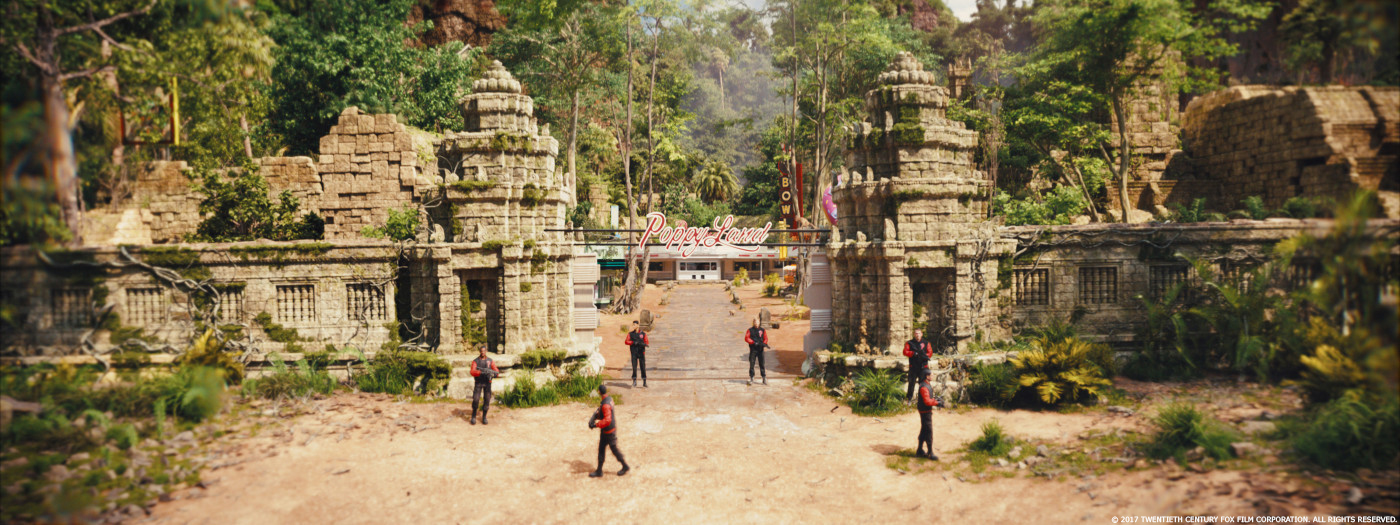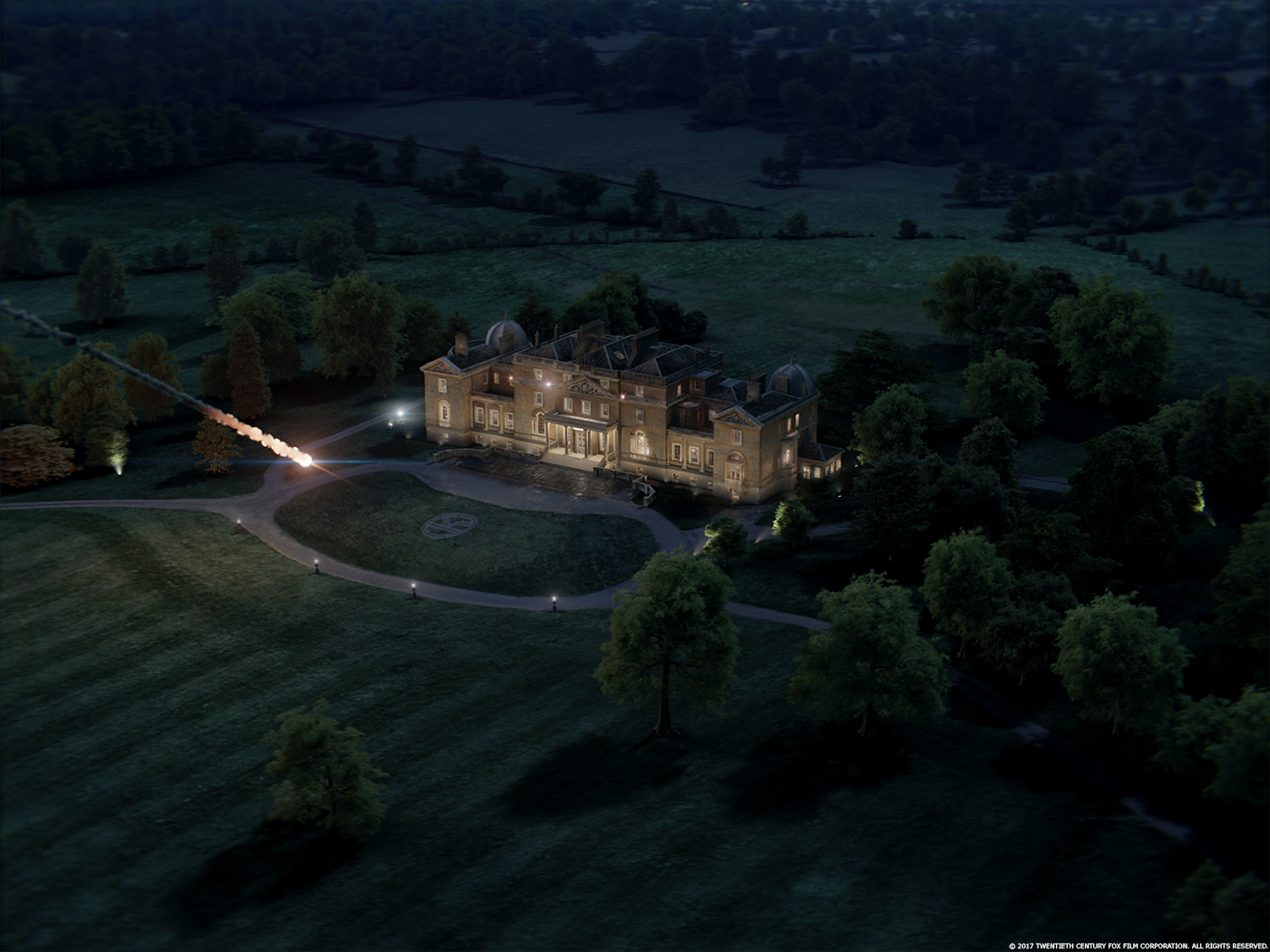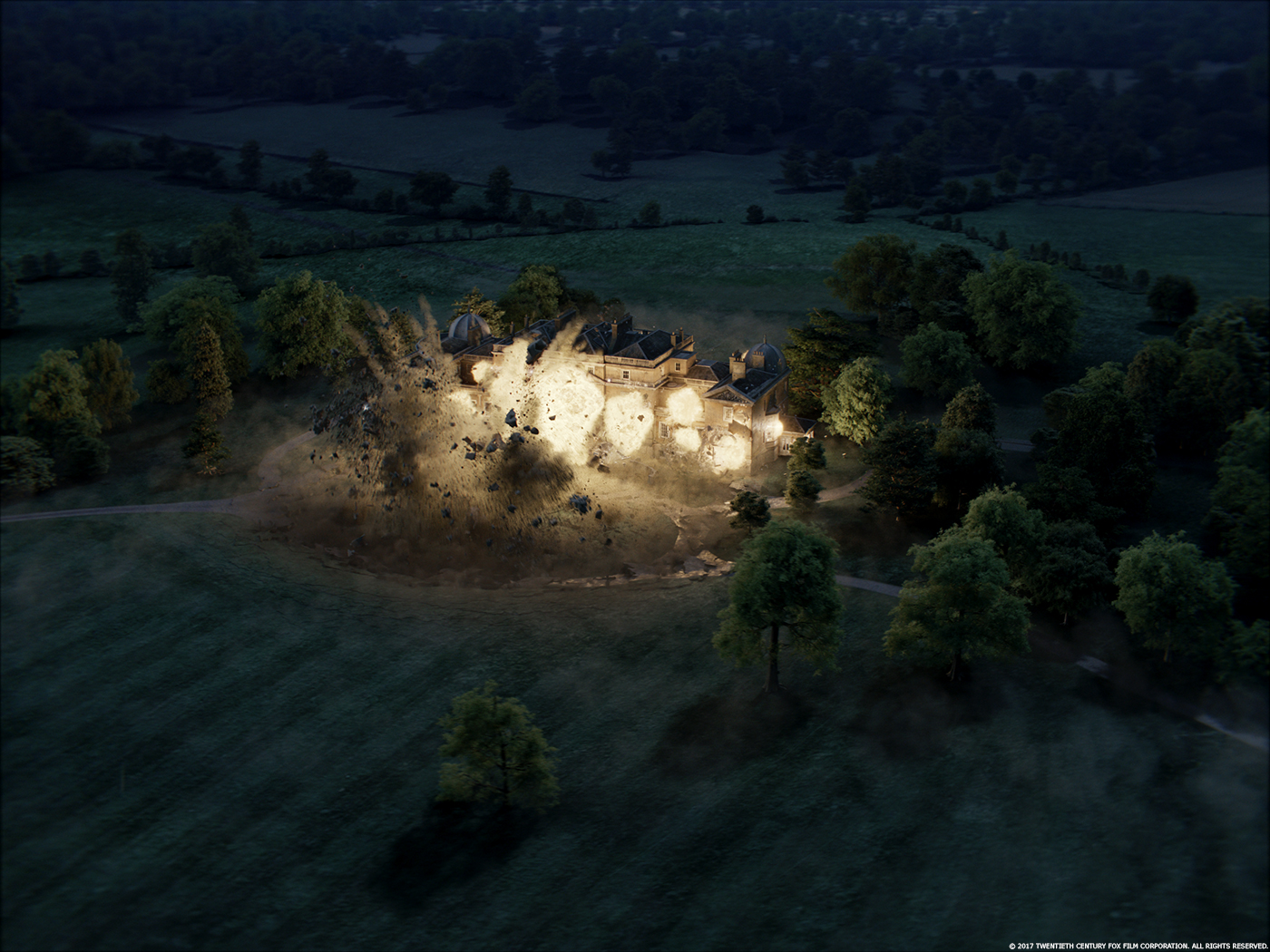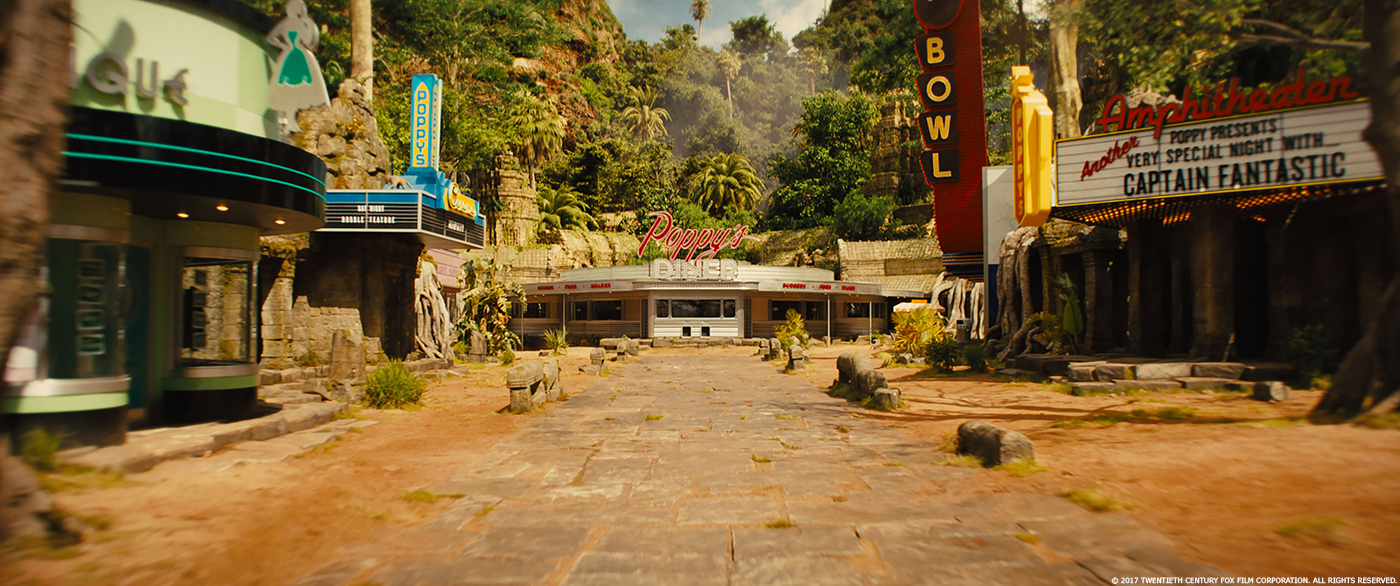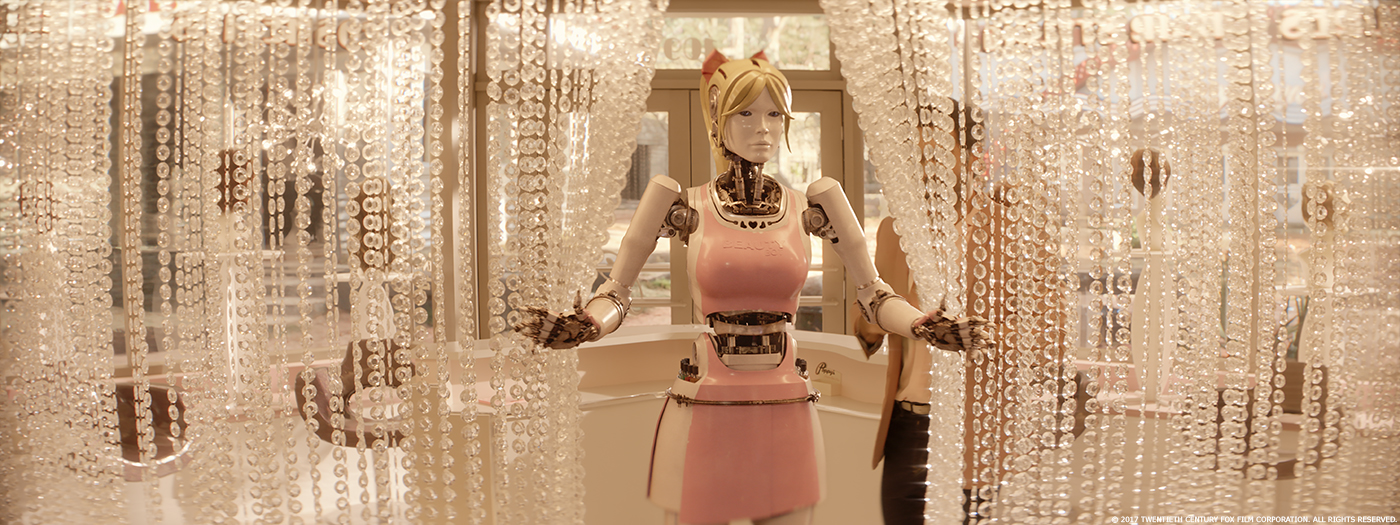In 2016, Mark Breakspear talked to us about the work of Sony Pictures Imageworks for SUICIDE SQUAD. He explains today his work on KINGSMAN: THE GOLDEN CIRCLE.
How did you and Sony Pictures Imageworks get involved on this show?
Barrie Hemsley, the VFX producer, contacted us in early 2016 and asked us to bid on the show. He had broken the show out into various packages which we bid. As he got the numbers back from the various facilities bidding the show, he and Angus Bickerton (production-side VFX supervisor) started to close in on which packages would go to which companies. When the award came, it was to Imageworks, Framestore, BUF and The Senate.
How was the collaboration with director Matthew Vaughn and VFX Supervisor Angus Bickerton?
Production-side vfx supervisor, Angus Bickerton and I have worked together on quite a few previous shows – FIREWALL, THE DA VINCI CODE, ANGELS AND DEMONS, DARK SHADOWS and now KINGSMAN: THE GOLDEN CIRCLE. I always feel extremely lucky to work with Angus as he is the consummate creative professional and I don’t think there is a better organized supervisor out there. His shows are always meticulously planned, with a B-Plan in the background should it be needed. Barrie Hemsley and Angus work so well together that when they team up on a show, you do everything you can to be part of the team.
Angus was very much the front man between Imageworks and Matthew. We did have a couple of moments where we got some raw / unfiltered Matthew Vaughn, but for the most part, Angus gave us the notes on the work. When we shot on set, it was obvious to all, that Angus and Matthew really connected creatively and that made for a great working relationship all the way through post.
What was his approach and expectations about the visual effects?
I think a lot of the approach and expectation was derived from the previous experiences on the first movie. The first movie was also a huge success but I think that the visual effects struggled a bit in certain areas and that became a bit of a worry for the second movie. Imageworks certainly had the most shots out of all of the vendors and we had many of the key sequences involving many full CG creatures like BeautyBot and the Robot Dogs, not to mention that we had to transform Longcross Studios in London into a tropical jungle in hundreds of shots!
What are the sequences made by Sony Pictures Imageworks?
We did the exploding/collapsing Kingsman headquarters, anything with BeautyBot, or Robot Dogs and anything with Charlie’s second robot arm. We also did scenes where Elton was in the theatre and the whole third act where they attack Poppyland. Also, as mentioned, we created the jungle for any scene that needed it.
How did you organize the work at Sony Pictures Imageworks?
Great question! This is the part that can sink a show if not right. We built a great team, with two amazing CG Supervisors, Jim McLean and Charles Abou Add, and two veteran Comp Supervisors, John Cairns and Trevor Strand. We roughly split the show along inside/outside lines and assigned leads to smaller subsets of that work. Heading up the team build was Digital Producer, Genevieve West, and she had a bevy of coordinators and assistant production managers helping her out. Our Digital Production Manager, Michael Killoren, managed the coordinators and APMs and ran our morning touch-base meetings that kept us honest on the show.
One key thing we did on this show throughout, was to have a rigorously defended policy of “not throwing anyone under the bus.” In other words, if anyone, at any level blamed someone else for something they would hear the “beep-beep-beep” of a bus reversing sound so they knew they had broken the number one rule of the show. It meant people owned problems and became very proactive at heading them off before they occurred. It also meant that when a problem did happen, people knew the team would fully support them when they put their hand up and said “help!”
There are many fights in the movie. How did you enhance these sequences?
The first movie was known for the church fight scene. Imageworks had a similar moment called the “F.O.B.” sequence, or Fight Over (the) Briefcase. Jack, Harry and Eggsy fight each other in what seems like one continuous camera move.
The camera moves around them, over them and zips to specific moments of action all without cutting.
Matthew and the stunt team mapped out the general choreography of the move, then everybody got together and worked out how best to film it in what would look like one fluid move. There was easily over 150 plates used for this one “shot”. Much of the furniture is CG, like the counter top and stools so the camera can be behind it and just pass through and over it without slowing down. We did extensive face replacements on the actors to cover up the stunt team that did some of the harder falls or punches.
Initially, the stunt team shot their own moves and strung all the pieces together which acted as a great base layer to film the main pieces. Luckily for the stunt team, they were able to slap together the elements and make it “sort of” work which gave everyone confidence that the real plates would also go together well. Some did, but some didn’t! But the final piece by Imageworks really does hide the tremendous amount of work done by so many great artists. The “before and after” plates on that sequence would leave many quaking in their boots at the work that had to be done!
How did you work with the SFX and stunts teams?
Angus worked very closely with the stunt and special effects teams to make sure we knew what was needed on the day. As always, we would enhance explosions and make them bigger if needed, or increase the jeopardy of an effect by moving it closer to someone or adding to it in some way. The stunt teams on this show were so helpful. They would often shoot and slap together little temp vfx montages of sequences to sell their key moments on set. I don’t think I’ve ever seen a more organized and skilled team before. We certainly couldn’t have had the incredible high-octane effects sequences without the SFX and stunt teams.
Can you tell us more about Whiskey’s electrical whip?
Don’t get hit by it.
We discover the Poppy hidden place in a beautiful transition. Can you explain in details about it?
The weed shot! I’m not sure where the idea came from to push into a bag of weed and then have that become a CG jungle that leads us to Poppyland, but it was an incredibly crazy idea that we knew we had to attempt.
What they shot on set did not look like weed though. It was supposed to, but I don’t think they smoke the same stuff in the UK as the rest of the world. It looked more like tea leaves in a bag, rather than juicy plump buds, dusted in THC, just waiting to be smoked. Of course, no one in visual effects does drugs of any kind, so we struggled visualize the right look at first…
Like when great actors gain or lose weight for a role, or become the persona they are portraying on screen, many of our VFX team took it upon themselves to really understand a marijuana transition as closely as they could. No doubt the VES will recognize this Herculean effort when awards season comes up. 😉
The transition plate starts on a table with the bag of tea leaves. This plate was shot by Angus and although he got in as close as he could, we still had to take over the camera and re-project the textures on to CG geometry to further push into the weed. The forest is entirely CG on the B side of the transition and only rejoins a plate when we see the street for Poppyland much later on. Even part of that is fully CG.
How did you create the huge jungle environment?
We painted it! We developed a great piece of software we now call Sprout. Daniela Hasenbring and Jeremy Hoey worked on this software for months honing it into something where we could literally paint the trees and various foliage onto the geometry. It allows you to take a very artistic approach to building huge environments. It allows your inner gardener to come out, but on mountain level scale.
The jungle was one of the areas we thought would be the trickiest, but it turned out Matthew and crew never questioned it from our earliest renders. Jeremy created hundreds of trees specific to the location Matthew wanted, as well as ferns, moss, grasses, shrubs and general forest floor covering. Sprout would use those objects as brushes on to the geometry and allow us to paint exactly what we wanted either with huge “whole forest” brushes, or just paint grass around the base of a single tree. It was a great set of tools and we’ve already been using it on later shows for underwater coral work.
Can you explain in details about the mechanical arm of Charlie?
Imageworks created Charlie’s second robot arm. It was called “arm”ageddon by Poppy as it had crazy extra features that made for some fun fight scenes. Charlie could eject the hand out to grab things far away, or spin 720 degrees on the wrist, or bend fingers back completely.
Poppy have two robot dogs. Can you tell us more about their design and their creation?
The general robotic look for the dogs had been roughed out prior to shooting. We knew that the looks were based on a Boxer and a German Shepherd, but that they would be fitted out with more menacing teeth (drill bits and chainsaw molars) to increase their deadliness.
Onset we shot with wooden cutouts to help with eye lines and blocking, always shooting clean plates and HDR reference for lighting. We also used people in grey full body suits to act as physical dogs as needed. In one shot, Harry is holding a bowling pin in the dogs mouth, and having a stunt guy in a grey suit was helpful so he had a reactionary force to deal with as he fought the robot dog.
Max Tyrie, our animation director, worked really hard with his animation team to create the right blend of robot and dog. It was hard not to push too much dog into their behaviors, but Matthew had a good sense how far he wanted to push them and would dial us back if we went “full dog”.
How did you manage their rigging and animation?
The dogs are made up of literally thousands of parts. I actually 3D printed one of the heads at work, and the detail that our modeling team put in there is remarkable. I bring this up because our rigging team made sure we didn’t have any object penetration on any of those parts during their crazy moves. The feet splay out correctly as they push on to the ground, the ears move, the dog can rest on its haunches and a whole host of other actions that are typical to dogs.
What is your favorite shot or sequence?
Personally, I loved the weed transition because I hadn’t seen one before. I also loved the Kingsman headquarters collapse for the huge FX sims that we did. The end battle had it all though, Robot Dogs, BeautyBot and a CG arm… oh and monkeys, gummy bears and killer scissors.
What was the main challenge on this show and how did you achieve it?
I think creating shots that had such huge CG visual real estate on screen and keeping it photo-real was a huge challenge.
What is your best memory on this show?
Hearing from the Imageworks team at the end what a great show it had been for them. That doesn’t happen often in our industry, and whatever magic occurred to foster such a great working atmosphere and end result, I hope to capture it again for the next one. We ask such a great deal from people in visual effects. The work on set is crazy and the hours are long as well, but visual effects artists are often staring at things that don’t have an already existing piece of hardware you can “grab off the truck” to solve the problem. When I look at the daily invention and the never-ending problem solving that occurs under crazy long hours and sometimes 7-day weeks over months and months, I’m humbled to be part of it. After all that pain… to hear that the show was fun, and that they want to do it again is the best memory you could ask for.
How long have you worked on this show?
We started shooting in the summer 2016, in London, and finished in June 2017… so roughly a solid year.
What’s the VFX shots count?
High 600s / low 700s depending on omits.
What was the size of your on-set team?
As always, our onset team varied during the shoot depending on the sequences. For the most part, the VFX plate supervisor was John Haley, and our main onset reference supervisor was Chris Hebert. These guys are veteran Imageworks employees and everything good that happened at the end can be traced back to these guys and how they helped us get the right plates and reference.
What is your next project?
Working on it… I will let you know!
A big thanks for your time.
// WANT TO KNOW MORE?
Sony Pictures Imageworks: Dedicated page about KINGSMAN – THE GOLDEN CIRCLE on Sony Pictures Imageworks website.
© Vincent Frei – The Art of VFX – 2017


